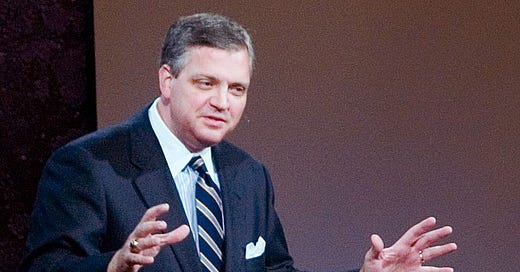How male headship became core to SBC identity
Historian Beth Allison Barr explains how last week's annual meetings highlight the consolidation of complementarian teaching, even beyond the SBC.
Last week, the Southern Baptist Convention — the largest Protestant denomination fellowship of churches in North America — held its annual meeting in New Orleans.
It’s fascinating to me that people far outside SBC life and culture follow the meetings closely. Several weeks ago, I noted that if you want to know where evangelicalism is going, you need to understand the SBC. With its recent reckoning over sexual abuse in its midst, treatment of women, and dalliances with “alt-right white supremacy,” the annual meetings crystallize broader struggles over the future of evangelical Christianity.
As such, last week I followed along as Saddleback founding pastor Rick Warren pled with his SBC cohorts to not break fellowship with the megachurch, despite its decision to ordain three women in 2021. According to reporter Kate Shellnutt, the 2000 Baptist Faith and Message (the SBC statement of faith) states that “the office of pastor is limited to men.” But in 2022, SBC leaders debated whether “p…
Keep reading with a 7-day free trial
Subscribe to The Beaty Beat to keep reading this post and get 7 days of free access to the full post archives.



